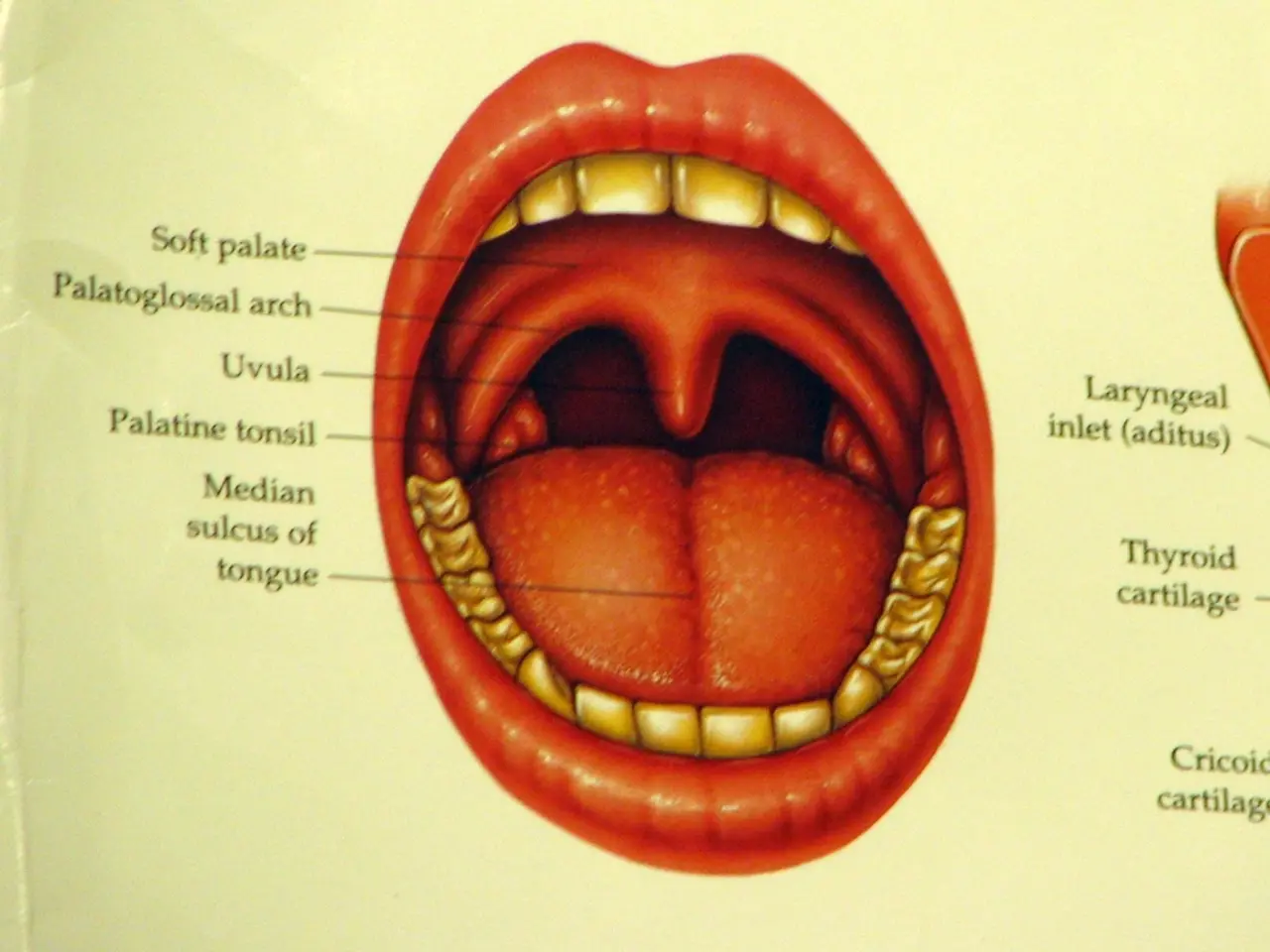Throat Cancer: Description, Symptoms, and Potential Hazards
In the realm of head and neck cancers, oropharyngeal cancer stands out as a significant concern, particularly when it is associated with the human papillomavirus (HPV). This article aims to shed light on HPV-positive oropharyngeal cancer, discussing its common symptoms, risk factors, treatment options, and outlook.
Symptoms
HPV-positive oropharyngeal cancer often manifests with symptoms such as a foreign-body sensation in the throat or around the tongue, as well as difficulty swallowing. These symptoms are a result of the tumor's location in the oropharynx, which includes the base of the tongue and tonsils.
Risk Factors
The primary risk factors for HPV-positive oropharyngeal cancer involve infection with high-risk types of HPV, especially HPV type 16. Sexual behavior, such as oral sex with multiple partners, is a known risk factor for acquiring HPV infection in the oropharyngeal region. This differs notably from HPV-negative oropharyngeal cancers, which are more strongly linked to tobacco and alcohol use.
Treatment Options
The treatment for HPV-positive oropharyngeal cancer typically involves a combination of surgery, radiation therapy, and chemotherapy. However, ongoing research is being conducted to reduce treatment intensity and side effects while maintaining excellent cancer control, reflecting the generally better prognosis of HPV-positive cases. Surgical removal of tumors, often followed by radiotherapy or chemoradiotherapy, is common. Emerging therapies, including immunotherapy and targeted cell therapies, are also under investigation, but standard treatments remain the cornerstone as of now.
Outlook
The outlook for HPV-positive oropharyngeal cancer is generally more favorable compared to HPV-negative cases. Patients tend to have better responses to treatment and higher survival rates. However, about 20–25% of HPV-positive patients may experience recurrence, typically within three years after treatment, but late recurrences—even many years later—have been documented. This requires long-term follow-up for these patients. When distant metastases occur, they can present years after initial treatment, underscoring the need for vigilance.
It is essential to note that this profile reflects the most current understanding of HPV-related oropharyngeal cancer as of mid-2025. The average age of diagnosis is 63 years old, but about 20% of cases occur in people under age 55. The 5-year survival rate for local or regional oropharyngeal cancer is 59%, while the rate for cancer that has spread to distant body parts is 28%.
For more information and guidance, consult with a healthcare professional. Early detection and appropriate treatment can significantly improve the prognosis of oropharyngeal cancer.
- Patients with HPV-positive oropharyngeal cancer may experience symptoms such as a foreign-body sensation in the throat or difficulty swallowing, which are caused by the tumor's location in the oropharynx.
- The primary risk factors for HPV-positive oropharyngeal cancer are infection with high-risk types of HPV, particularly HPV type 16, and sexual behavior, such as oral sex with multiple partners, which can increase the risk of acquiring an HPV infection in the oropharyngeal region.




